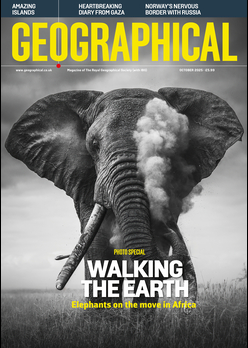
Launched in 2007, the project to combat desertification has been hit by various challenges since its creation – so will it ever be completed?
By
Back in 2007, an initiative was created to support the growth of previously degraded land across the drylands of the Sahel in Africa. Dubbed the Great Green Wall, its name often leads to the incorrect assumption it is a project focused solely on planting vast swathes of trees.
Today, the Great Green Wall is a far more complex and multifaceted project than its name belies. Through creating grassland and farmland – and not planting trees alone – it seeks to increase local jobs, support communities and foster sustainable development both environmentally and socially across the areas it covers.

Enjoying this? Check out our other similar content:
- Geo explainer: Will the Sahara flood again?
- Saharan dust can help marine life – here’s how
- Why the Sahara desert is growing
Eighteen years on, three million new jobs have been created in countries that are part of the project. The Great Green Wall has also restored 30 million hectares of degraded land – equivalent to the size of the Philippines. Progress has been made, but the project is only 30 per cent complete with just six years left on its proposed timeline of completion by 2030.
So, the question arises: what has happened along the way to stunt its progress? And what is being done to ensure its completion?
What problems does the Great Green Wall face?
A series of logistical circumstances combined to create major difficulties for the Great Green Wall project. These include the securing of funding but also extend to poor coordination between stakeholders and financial partners and weak organisational structures that make it challenging to implement any strategies devised.
More than 20 countries and numerous international organisations are part of the Great Green Wall project. The main countries involved are Burkina Faso, Djibouti, Eritrea, Ethiopia, Mali, Mauritania, Niger, Nigeria, Senegal, Sudan and Chad.
Organising tasks and monitoring the progress of the project is, therefore, very difficult. Each country has its own individual goals to achieve, from diversifying income to reducing soil erosion, while also playing its role in the completion of the mammoth project.

Another significant barrier to the completion of the project has been security: many terrorist groups operate in the corridor of the Great Green Wall, such as Boko Haram and Ansar Dine. Some countries involved in the project have been hit by humanitarian crises exacerbated by military coups and war.
Environmental issues are an additional factor contributing to the slower progress of the project. Ensuring enough water for trees to grow in the arid and semi-arid regions of the Sahel is a difficulty. Collecting rainwater is no easy feat, requiring local communities to dig trenches – known as retention bases – to store rainwater to use later on.
Desert locusts, which can destroy restored vegetation overnight, can also pose a serious threat to the success of the Great Green Wall.
Can the Great Green Wall be built by 2030?
According to the UN desertification summit this year, the Great Green Wall is not on track to meet the aim of completion by 2030.
A new strategy to expedite the project’s progress – coined the Great Green Wall Accelerator – was made by President Emmanuel Macron, along with other world leaders, in 2021. A total of $19 billion was pledged in new funding to be distributed between 2021-2025. But by March 2023, only $2.5 billion had been given out, with the rest expected by the end of 2025.
These pledged funds are also not for the sole use of the Great Green Wall and are instead spread across various projects that support international development.
Estimates suggest that, in total, at least $33 billion of funding is required in order to meet the initial goal of finishing the project in the next six years. It is not known where further funding will be obtained, although the president of the 2022 UN summit, Alain Richard Donwahi, has cited international donors, the private sector and Green Wall countries themselves as potential sources for further investment.
To combat the difficulty in organising and monitoring funds, the Great Green Wall Observatory was created this year, a digital platform to ensure funds can be tracked adequately.
What does the future hold?
Currently, at least 40 per cent of the world’s land is degraded. By 2050, it’s predicted that over three-quarters of the world’s population will be impacted by desertification, with the effects of climate change and intensive farming methods the main causes. Consequences of desertification range from loss of biodiversity to water and food insecurity.
Ultimately, finishing the Great Green Wall project relies on a complex network of factors from financial funding to logistical planning, but one thing is certain: with each passing year, the need for its completion grows.




